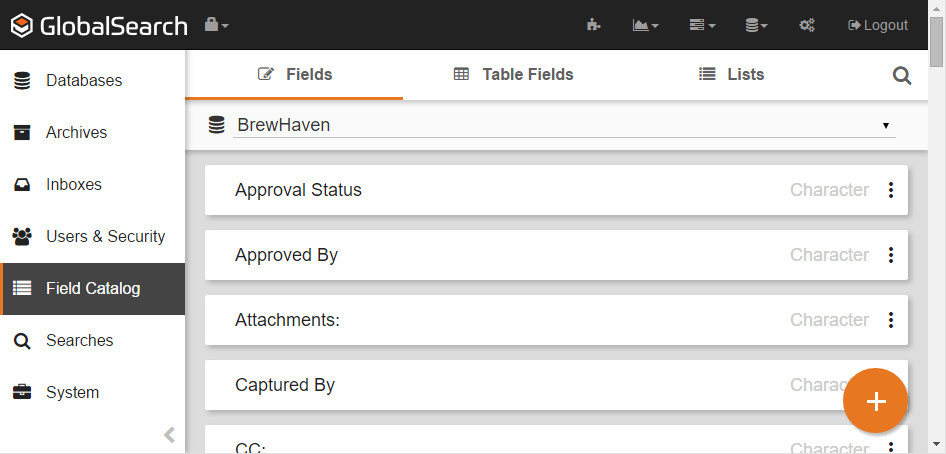Field & List Management
Fields are created in the Field Catalog and then are available be used or reused in any of the Archives created in a database. Only members of the SSAdmin group or a database administrator for that database can access the Field Catalog. Prior to creating the first Archive, one or more Fields must be created. There are three types of Fields available: regular Fields (to store identifying information about a document, such as vendor names); Field Lists (to quickly choose indexing information from a preconfigured list of values); and Table Fields (used to group multiple Index Fields together, effectively creating a spreadsheet-like table).
Once a Field is created, the Field Catalog shows the complete list of Fields available to any Archive, with the name of the Field, data type, size limit, and Field ID. The Field ID is useful when performing data updates into GlobalSearch from other data sources.
To create, edit, or delete Fields, Table Fields, or Field Lists, on the GlobalSearch toolbar's Administration menu, select Administration. In the vertical Administration menu, select Field Catalog. A list of the Fields for the select database will appear.
Plan and Document Field Design
While you want to have as many Fields as necessary, always be sure you need a new Field before creating it; see if you can repurpose an existing Field. The most efficient way to set up Archives is to first plan the Fields ahead of time, create them, create Archives, and then assign Fields to the Archives. This approach allows a single Index Field to be shared across multiple Archives, simplifying the Archive creation process and reducing the chance of human error when setting up the same Field on multiple Archives.
Documenting your plan helps you formulate a “to do” list of Fields to create. It helps you clarify your Field and Archive naming conventions. Documenting is also useful for gathering user feedback before creating the Fields and finding that you must change them later.
Name Fields Thoughtfully
Consider how Field names will appear to end users. The name should clearly indicate the Field’s purpose. Consider how “Date” could be more confusing than “Document Date,” “Date Document Signed,” or “Date Received.”
